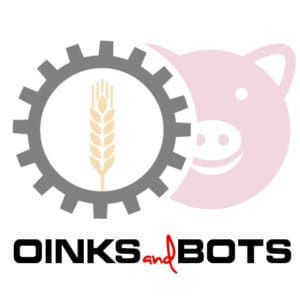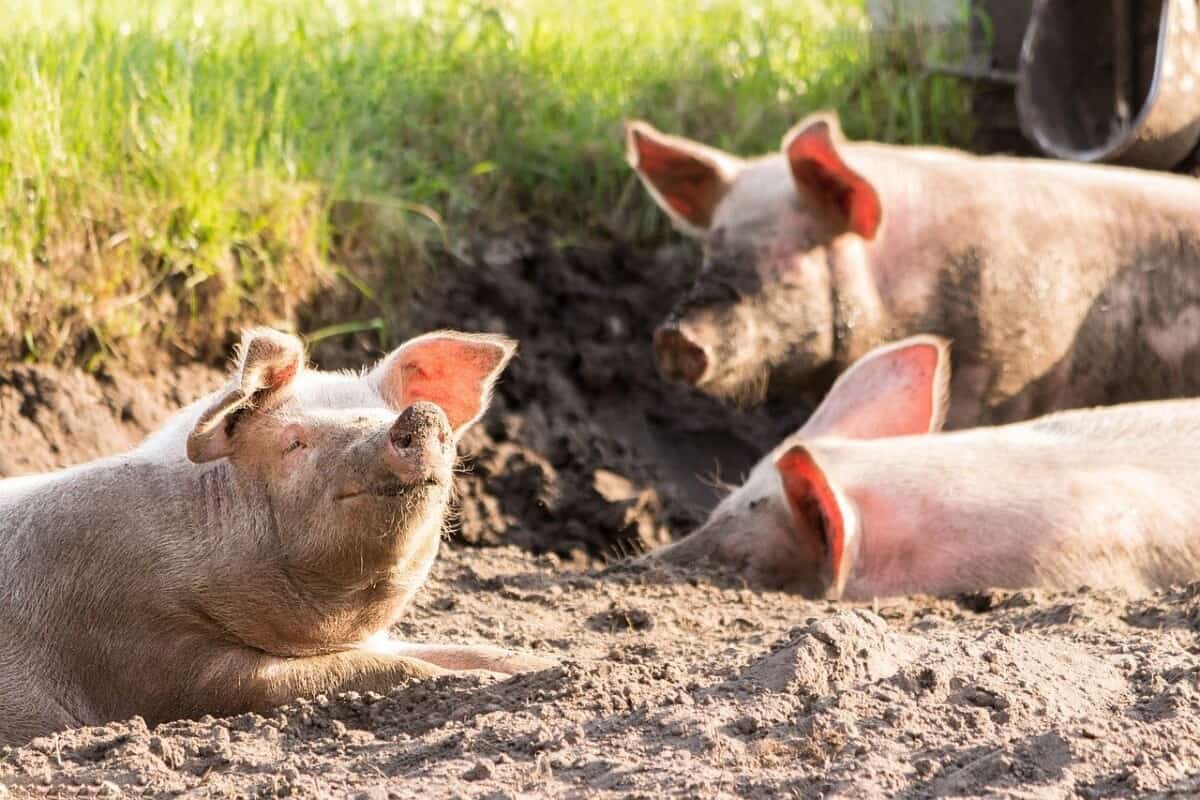There may be many reasons why someone would want to raise their own pigs. But is it cheaper to rear your own pigs? Short answer is that it depends. It can be cheaper from a money point of view to rear your own pigs but you would need the tools, space and time to properly rear and butcher pigs.
One, you know you’ve fed them well and taken good care. So, what you have in the end is fresh healthy meat. And two, the stock can practically make you self-reliant with no store-runs.
But it takes a lot of effort to raise a farm animal. And at the end of it, it’s worth checking if you’ve actually saved some money. Make sure to look at my article on gestation periods for pigs to see how quickly you can expect a return on your investment.
As it is true for all livestock, the cost of raising a pig is dependent on its age and season. For instance, most summer rearers would want to go for feeder pigs for its cost-effectiveness. They raise them through summer and harvest in the fall. In fact, raising pigs during the winter months can be expensive due to the extra fodder required to keep them warm.
The season is one variable of the many. Age is another. The older and more mature the pig grows, again, the more it needs to be fed and the conversion drops low. People who raise pigs themselves often prefer to purchase piglets when they’re about 2 months old and harvest them in the next 2-4 months depending on their needs.
Harvesting piglets is also easier in a family setting because of the manageable size. And by this age, the piglets have often reached the commercial harvest size and weight giving you similar cuts as you may find in a store.
The choice of breed may also affect the cost. Heritage pigs like lard and bacon pigs are reared for their healthy fat and flavorful cuts. These are slow-growing and with them, you might also incur a high initial purchase cost. For more information on which pigs are best to rear and their strengths and weaknesses, read this article here.
Some varieties with quicker growth and leaner meat have a better feed conversion value (Feed conversion value is the ratio of how many pounds of food you feed the pig and weight of the finished pork i.e hanging weight minus the starting weight).
Following these standard ways and with about 4 piglets reared, the meat obtained can last a regular family an entire year. This also means a bonus of bones for your pet dogs and the pig lard can be rendered for roasting and grilling.
But the real question is do the benefits balance the efforts? Or would it actually be cheaper and easier to get meat from your local butcher or store on a need basis?
Here’s some food for thought.
The Math
On average, these piglets cost about $100 each. Let’s say you buy piglets in the summer months to maintain low costs. You spend approximately $400 for the year’s meat (Remember 4 piglets for a year’s stock?). Now comes the time to buy them fodder.
Good quality pig feed would cost $0.25 for each lbs. This means you may be able to find more affordable kinds. But it’s always good to over-budget when we discuss costs! As these piglets grow, they consume close to 5 lbs of this commercial feed each day. Make sure to check out my article on how to best feed your pigs.
While a number of farmers may choose to make their own pig feed, commercial varieties often include the right proportions of nutrients for the meat to develop well. That’s $1.25 a day for feeding each of the pigs.
The average time after which piglets are harvested is 3 months. The feed by this time would have cost you about $115 for each pig. The slaughtering fee for each pig is usually $50 and butchering $100.
Now:
Total cost = Purchase price + Feed cost + Slaughter + Butchering
According to our calculations, each pig reared in the summer months would thus cost $365. As we mentioned, the hanging weight is usually around 150 lbs at this stage. The price per pound is thus around $2.50.
The price per unit weight for the same meat would have been double at the local farm/ butcher. It might have even been slightly higher in-store! So you’ve definitely saved on some money!
If you were to do the same during winter months, you might have to add in the cost of the extra feed which can go up to $400. Managing the extra weight of the fodder and all the extra care that the pigs need through the winter might also require you to hire extra labor that adds on to the cost. You might have to take a loss in that case.
Even if you decide to raise the pigs for some extra months for litters, you might still take a loss given that you’d have spent nearly $1500 while the average litter size is just 3 piglets. You would still be at a loss! Even if you were to defer the costs by a second litter in a year, it would be winter time making them much harder to sell.
So the key to some savings along with the homesteading venture is to be smart and start the rearing process at the right time.
Pros Of Rearing Own Pigs
Taste
Yes, you can taste the difference! Pork from pigs reared with care and not bred for commercial purposes are claimed to taste extremely different. It is claimed that this is not only true for pork but also for beef and lamb.
Supermarket-purchased meat also requires a lot of draining (despite purchasing lean meat) and can smell fishy or rancid sometimes. The aroma while cooking home reared pork is distinct and special. You may never be able to go back to store-bought pork!
Health
It gives you peace of mind to know where your pork has come from, how the pig was reared, and what it ate. Not only are you in control of the meat quality, but also your own health. You’ll have to worry much less about farm-acquired diseases in pigs that can be detrimental to your health.
Cons Of Rearing Own Pigs
Like any homesteading venture, yes, there are pros AND cons.
Space
Smaller farm animals like chickens may need less space. But if you are considering rearing pigs at home, you need a larger space. It is difficult to keep them happy and healthy just in your backyard.
Sometimes the supply and demand situation may lead you to buying over 4 pigs. People buy up to 6 and use 4 for meat and the rest for other purposes like their litter. And even for 4, it’s beneficial to have a dedicated acreage.
How big a piece of land every pig requires is dependent on the climate and the type of soil. But if you don’t have space, you might have to invest which will actually add up to the costs.
Fencing
Along with dedicating some space for the pigs, you will also need to contain them from wandering and protecting them from predators. This and space are just initial costs if you are willing to invest.
Sometimes pigs can be notorious but usually, some good soil and sufficient feed will keep them put.
Everyday care
This is what most people hire labor for. Pigs require plenty of water. Hand hauling will be really difficult for a lone farmer. This is particularly so in the winter months.
The weight of the feed and amount of water required each day often necessitates labor especially if you’re involved in jobs other than farming. It is not about extreme amounts of delicate care, but just a constant supply of clean water and good food.
Breeding
If you’re looking to overwinter lady pigs for the litter, it can get really expensive. You do get to harvest them eventually. But the actual payback is only the meat. Nothing really covers the cost of rearing pigs through the year entirely.
Winter climates in some regions can be extremely harsh. It requires more than double the effort working outdoors with the pigs in times like these. Since the payback is quite low, most people stick to buying piglets around spring.
There are too many variables to consider when considering the option of home-rearing. You must remember that there is no one right way to do things. Home-rearing is often a choice to raise the quality of meat but of course, you do not want it to be heavy on your pocket.
To make sure you get the best out of it, find a reliable source for quality reasonably priced feed and piglets. Take multiple tries and find a system that works best for you.

